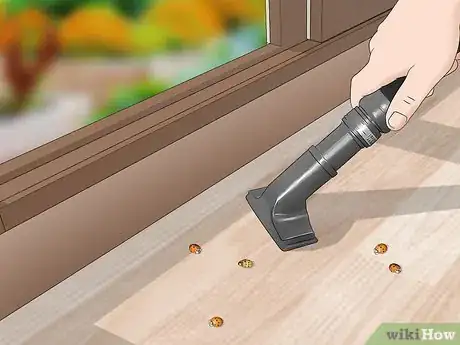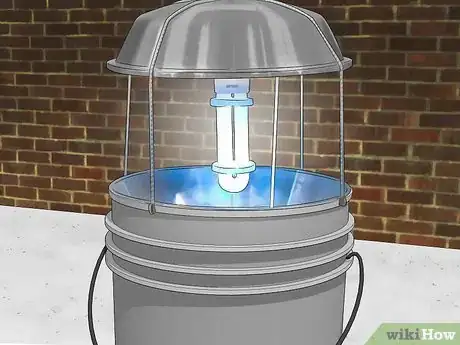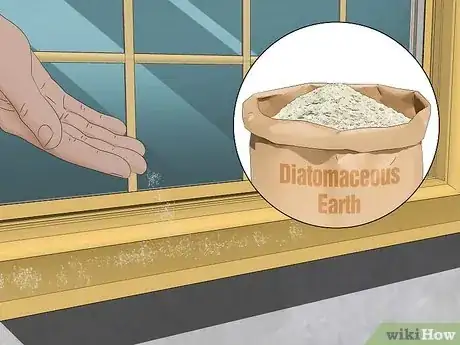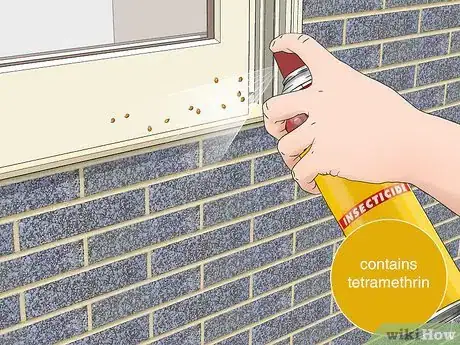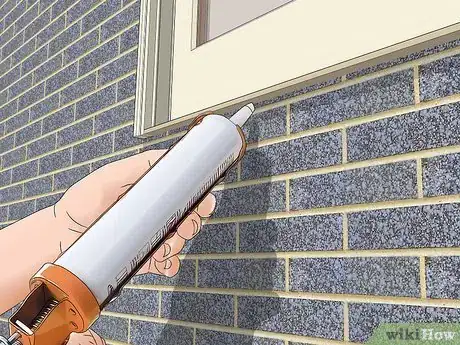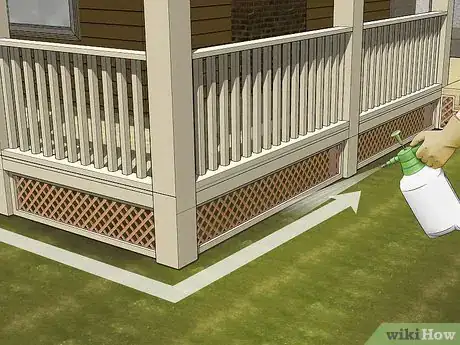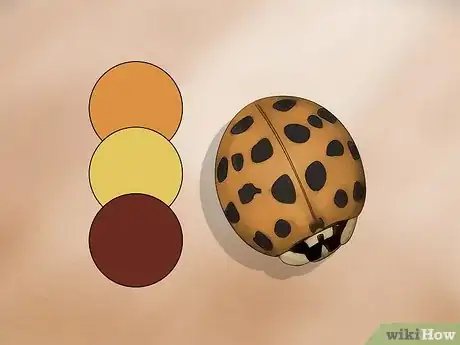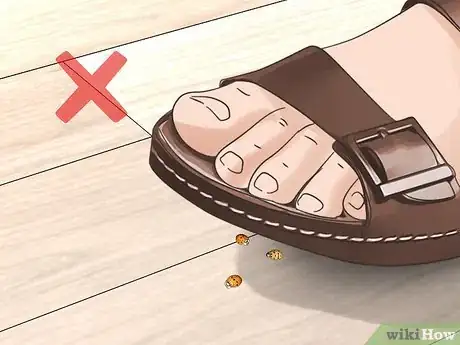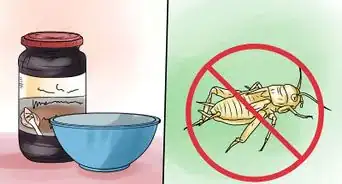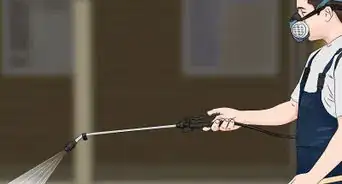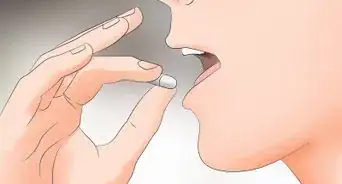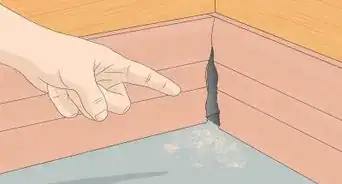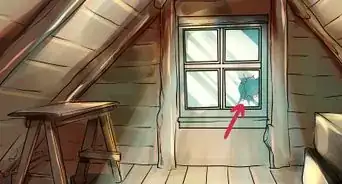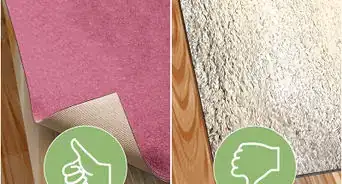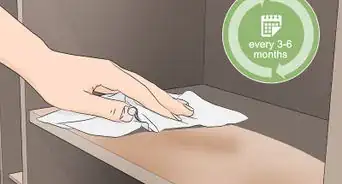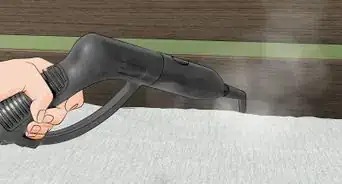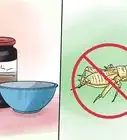This article was co-authored by Elmer Bensinger and by wikiHow staff writer, Eric McClure. Elmer Bensinger is a Pest Control Specialist with Eden Advanced Pest Technologies in Spokane, Washington. With over 20 years of experience, Elmer specializes in integrated pest management and products such as insecticides and rodenticides. He studied business at South Puget Sound Community College.
There are 14 references cited in this article, which can be found at the bottom of the page.
This article has been viewed 18,204 times.
If Asian lady beetles have started wandering into your home, there are plenty of easy steps you can take to eradicate the infestation. While these bugs have a bad reputation, you can rest assured that they’re mostly harmless. Still, if you want to get rid of these annoying bugs, we’ve got you covered. In this article, we’ll walk you through everything you need to know about controlling an infestation, preventing future beetles from showing up, and even cover key identification and safety information.
Steps
Controlling an Infestation
-
1Vacuum beetles up using a hose attachment to handle a swarm. This is probably the best way to get rid of an infestation. If you stumble across a large number of lady beetles, grab your vacuum and use the hose attachment to suck them up. Use a vacuum with a HEPA filter if you have one, as this will keep the bugs from crawling back out. Once you’ve sucked the beetles up, release them outside.[1]
- This is also a great way to suck the bugs out if you can’t really reach them. Lady beetles like to hide in hard-to-reach areas like crawl spaces, attics, and behind drywall to stay warm.
- The beetles aren’t actually bad for the environment, and they don’t damage homes where they set up shop for the winter. If you can, release the bugs outside without killing them.
-
2Catch and release individual beetles outside for a nonlethal option. The beetles only bite if they think they’re being attacked, so just slide a piece of paper underneath them and take them out the window. You can even grab a broom and a dustpan and gently sweep them up before releasing them outside.[2]
- Asian lady beetles are beneficial insects—they control aphids and other nuisance pests. Letting them live is ideal, even if you don’t want them around your home.[3]
- Avoid squishing the beetles! They release a stinky pheromone and leave behind stains.
Advertisement -
3Use a light trap to attract and capture these bugs outside. The beetles are attracted to light, so purchase a light trap designed for beetles. These are different from the bug zapper you might be picturing. These are just one-way live traps that emit light that you’ll probably need to buy online. At night, hang the trap in whatever area the bugs are in and empty it out in the morning.[4]
- If the bugs are outside swarming against your vinyl siding, hang the light in your garden away from your home.
- Bug bombs do not work with the Asian lady beetles, so don’t bother fogging your home.
-
4Pour diatomaceous earth into openings where the beetles come inside. If the beetles are coming into your home through a crack or gap, purchase diatomaceous earth. This non-toxic and natural insecticide will dehydrate the bugs and kill them. Pour the earth in and around any gaps where you’ve found the beetles. You can even line your baseboards to keep them from creeping around.[5]
- You can also pour diatomaceous earth around the perimeter of your home to keep lady beetles and other pests away.
- Make sure that you use the insecticide version of diatomaceous earth, not the food-grade version. It will say which kind of diatomaceous earth it is in on the label.
-
5Try dish soap, vinegar, or rubbing alcohol for a natural option. Mix one-part dish soap with one-part water in a spray bottle. Shake the bottle to mix the soap and water thoroughly. You can use rubbing alcohol or white vinegar instead of dish soap if you prefer. Spritz any bugs that you come across and they may die.[6]
- If they don’t die, this may work to keep the bugs from advancing any further.
-
6Spritz the beetles with essential oil to repel them. Essential oils like wintergreen and peppermint have been proven to repel other types of Asian beetles, and may work on Asian lady beetles.[7] Grab an empty spray bottle and fill it up with water. Then, add 5-10 drops of essential oil and spray the area where the bugs are coming into your home. Try:
- Wintergreen oil
- Peppermint oil
- Cedar leaf oil
- Oregano oil
- Dalmatian sage oil
- Juniper berry oil
-
7Opt for commercial pesticides as a last resort. Unfortunately, most of the non-toxic and natural options are not potent enough to handle these pesky bugs.[8] You can spray the bugs directly with any insecticide containing pyrethrins or pyrethroid (i.e. tetramethrin or resmethrin). Spritz the bugs directly to kill them on contact and wipe up the residue and bug.[9]
- Unfortunately, these insecticides are toxic. They can damage your skin and they’re lung irritants. Wear a dust mask and gloves when using them and clean any surface you spray thoroughly after you discard the dead bugs.[10]
- It may be tempting to empty an insecticide into a crack in the wall where the bugs are coming out, but it’s unlikely to have a positive impact. The dead beetles may also attract other bugs, so leaving them in your wall may not work out so well.[11]
-
8Hire a professional to handle the infestation successfully. Asian lady beetles often hang out in hard-to-reach spaces, so a pro will have an easier time finding them. On top of that, they have access to commercial insecticides and tools that you won’t be able to use. If you really want to get rid of a large number of lady beetles, this is the way to go.[12]
- Asian lady beetles hibernate high off of the ground wherever they can find warmth. As such, they’ll often dig their way into crawl spaces, attics, and gaps in walls on the second and third floors of buildings.
- If possible, try to find an exterminator who has experience working with Asian lady beetles. These bugs haven’t been around the US for very long.
-
9Wait the bugs out, since they’ll leave once winter is over. The bugs won’t damage anything, and they’re just hibernating in your wall. If you hear them moving around when it starts getting warm again, they’re just looking for an exit. If you’re comfortable leaving the bugs alone, they’ll be out of your hair before you know it![13]
Preventing Asian Lady Beetles from Getting Inside
-
1Seal cracks and gaps in your home up before winter comes. If the bugs are inside, they’re coming through an opening somewhere. Seal up the gaps around light fixtures and patch any missing drywall. Seal your doors and windows with weatherstripping.[15] For chimneys and exhaust pipes, use number 20 (or smaller) screen mesh to cover the opening. This will keep the beetles out without interrupting airflow.[16]
- This is really the first step you should take, and the best way to keep the lady beetles out in the future. They’re not especially adept at breaking into homes. In fact, you may even see a swarm on the exterior of your building just hibernating in the open if they can’t get in.
-
2Line the exterior of your home with a defensive bug spray. Any ready-to-use formula containing bifenthrin, cyfluthrin, deltamethrin, or permethrin might work. Follow the directions on the label, put on protective gear, and spray the sides of your home to keep the beetles out. The lady beetles will look for somewhere else to hibernate for the winter.[17]
- This is a good option if it’s impossible to seal up your home because it’s very old or you have major repairs to make.
- The lady beetles prefer unshaded walls that get a lot of sun. If your home is especially large, at least cover the western and southern exterior walls.[18]
-
3Remove contrasting colors from your home, if possible. Asian lady beetles are attracted to surfaces that have a combination of light and dark features. Making your home look more uniform may keep them from showing up. If your exterior is dark, use dark blinds and get rid of bright fixtures and lawn ornaments. If your exterior is lighter, use lighter shades and avoid any colorful flags or features.[19]
- If you want to focus specifically on modifying one part of your home, focus on the southwestern side of the building. This side will get more sun and the beetles are generally attracted to sunny areas.
Identifying Asian Lady Beetles and Staying Safe
-
1Look for uniform dots and a white M to spot a lady beetle. Lady bugs are consistently red, while the lady beetles can be orange, yellowish, or even dark red. The lady beetles also often have a white M-shape on top of their head. Finally, the dots on a lady bug are usually uniform, while the lady beetles have all kinds of different spots—some will even have zero dots at all![20]
- If the bug is in your house, it’s probably a lady beetle. Lady bugs don’t want to be inside of your house, while lady beetles will try to seek shelter when it starts to get cold out.[21]
- Asian lady beetles are also known as Asian lady bugs or multi-colored lady beetles. They’re all the same thing, though.
-
2Avoid crushing beetles indoors to prevent nasty odors. Do your best to not crush any beetles that you come across inside. For one, the bugs only bite if they think they’re being attacked. On top of that, they’ll release a nasty odor when you crush them, and they’ll stain whatever surface you crush them on. As tempting as it may be, do not stomp on the beetles than wander into your home.[22]
- It’s important to note that they don’t want to be in your home, as well. The lady beetles only wander inside because they’re lost, and they’ll leave if you take them outside!
-
3Wear a dust mask, gloves, and sleeves to prevent allergic reactions. These bugs emit a pheromone that you may be allergic to. If you’re getting close to Asian lady beetles, put on a dust mask and wear long sleeves. The vast majority of the time, these bugs are harmless, but they can bite if they get nervous, and they release an obnoxious pheromone when they’re disturbed. Some folks are allergic to this pheromone, so gear up just to be safe![23]
- Most people will just be annoyed by the smell. Allergic reactions are rare and unlikely to be serious (it’s usually just sinus and skin irritation). Still, better safe than sorry!
- The bite isn’t dangerous, although it might be alarming. Many people compare it to a small pinprick. You can prevent the bites by wearing long sleeves and gloves.
- Also, wear clothes that you don’t mind throwing in the wash. These bugs can leave yellow stains behind, and you may need to wash your clothes if they rub against you.[24]
Warnings
- There’s a viral post going around online about dogs swallowing lady beetles and becoming poisoned. Unfortunately, this is true. While a pup may just have an upset stomach when they eat a bug or two, they may become toxically ill if they eat too many lady beetles. Take your dog to the vet if you see them chewing on a bunch of these bugs.[26]⧼thumbs_response⧽
- You can be allergic to the pheromone the lady beetles emit. It’s not likely going to be dangerous, but see a doctor if you have difficulty breathing or your symptoms don’t go away.[27]⧼thumbs_response⧽
- Most over-the-counter insecticides are going to be ineffective to the lady beetles. They may just irritate them to start emitting their pheromone, so read the ingredients carefully to see if a product will work. Anything containing pyrethrins or pyrethroid (i.e. tetramethrin or resmethrin) should do the trick.[28]⧼thumbs_response⧽
References
- ↑ https://extension.psu.edu/multicolored-asian-lady-beetle-ladybug
- ↑ https://extension.missouri.edu/publications/g7369
- ↑ https://www.ars.usda.gov/oc/br/lbeetle/index/
- ↑ https://www.ars.usda.gov/oc/br/lbeetle/index/#mixed
- ↑ https://pestcontrolhacks.com/how-to-get-rid-of-asian-beetles/
- ↑ https://nj1015.com/these-biting-beetles-that-look-like-ladybugs-are-swarming-nj/
- ↑ https://www.ars.usda.gov/research/publications/publication/?seqNo115=227048
- ↑ https://extension.psu.edu/multicolored-asian-lady-beetle-ladybug
- ↑ https://extension.missouri.edu/publications/g7369
- ↑ https://nj.gov/health/eoh/rtkweb/documents/fs/3450.pdf
- ↑ https://extension.psu.edu/multicolored-asian-lady-beetle-ladybug
- ↑ https://www.ars.usda.gov/oc/br/lbeetle/index/#mixed
- ↑ https://www.ars.usda.gov/oc/br/lbeetle/index/#mixed
- ↑ https://portal.ct.gov/CAES/Fact-Sheets/Entomology/Multicolored-Asian-Lady-Beetles
- ↑ https://extension.missouri.edu/publications/g7369
- ↑ https://extension.psu.edu/multicolored-asian-lady-beetle-ladybug
- ↑ https://extension.msstate.edu/sites/default/files/publications/publications/p2443.pdf
- ↑ https://extension.msstate.edu/sites/default/files/publications/publications/p2443.pdf
- ↑ https://entomology.ca.uky.edu/ef416
- ↑ https://extension.umn.edu/nuisance-insects/multicolored-asian-lady-beetles
- ↑ https://www.wkbn.com/news/local-news/ladybugs-or-asian-lady-beetles-what-to-know/
- ↑ https://extension.missouri.edu/publications/g7369
- ↑ https://extension.psu.edu/multicolored-asian-lady-beetle-ladybug
- ↑ https://www.ars.usda.gov/oc/br/lbeetle/index/#mixed
- ↑ https://www.ars.usda.gov/oc/br/lbeetle/index/#mixed
- ↑ https://www.snopes.com/fact-check/ladybugs-beetles-dog-mouth/
- ↑ https://entomology.ca.uky.edu/ef416
- ↑ https://entomology.ca.uky.edu/ef416
